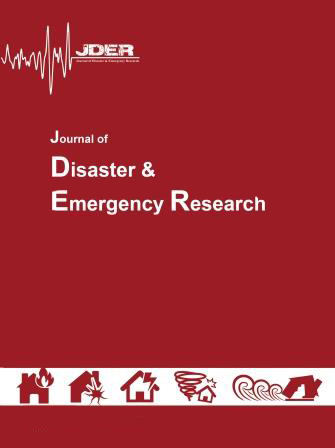Document Type : Letter to The Editor
Authors
1 Department of Health in Disasters and Emergencies, Iran University of Medical Sciences, Tehran, Iran
2 Department of Health in Disasters and Emergencies, School of Health Management and Information Sciences, Iran University of Medical Sciences, Tehran, Iran
3 Health Management and Economics Research Center, Department of Health in disasters and emergencies, Iran University of Medical Sciences, Tehran, Iran
Abstract
no
Keywords
Dear Editor
|
T |
he World Health Organization had announced an emergency COVID-19 situation officially on March 11, 2020, and since then millions of people around the world have been infected (1). These emergency conditions have endangered both the public health and health care systems (1, 2). Coronavirus is considered a greater threat to people affected by complex crises and those living in camps without proper infrastructure and poor health systems (3). The field of health, especially reproductive and sexual health have been greatly affected by the turbulence caused by the coronavirus disease epidemic (4). Women and girls are affected differently from men during epidemics and are faced with a variety of risk factors that often need to be addressed urgently. Gender inequality is exacerbated in critical situations (5).
It is natural for health and medical care centers, including reproductive health facilities, to be closed due to transferring the resources to control the epidemic (6), and thus, reproductive health services are overlooked (5). Lack of health facilities and restriction in providing medical services including obstetrics and gynecology leads to an increase in maternal and infant mortality. For these reasons, thorough and careful planning with all the details is required for the performance and response of the medical personnel without any ethnic, racial, religious, or gender discrimination (7). Experiences from past epidemics have shown that women's participation in the response phase has been very influential and valuable. Therefore, educating women about disease control methods is one of the most important measures in vulnerable communities (6). In the pregnancy and childbirth services centers, before accepting a pregnant mother who is suspected of COVID-19, the necessary preparations such as creating an isolated room, providing PPE equipment, and measures to prevent the spread of the virus should primarily be taken place. The staff of the obstetrics and gynecology services should be educated and the officials of these centers should assure the correct perception of personnel regarding the ways of controlling the infection and managing the delivery of a pregnant woman infected with this disease. (8)
It is recommended that the localized guidelines for pregnancy and childbirth in COVID-19 disease be prepared for the management of clients in treatment centers in camps. Isolation of pregnant women is not completely recommended. It should be ensured that all women in the camp have easy access to emergency obstetric care, pre and postnatal monitoring, and abortion care (9). After delivery, if the mother and baby are kept separate, the breast milk should be handled hygienically and fed to the baby by a healthy person. On the other hand, if the mother and baby are kept nearby, it is recommended that the mother covers her face with a mask while breastfeeding and washes her hands with soap and water before breastfeeding (8).
Due to the concern about pregnancy in the conditions of the prevalence of the disease, the demand for receiving contraception services has increased (4). Moreover, quarantine practices reduce people's access to contraceptives, resulting in the expectation of the risk of unwanted pregnancies and an increase in unsafe abortions (10). In order to reduce the women’s referrals to medical centers and being exposed to risk, family planning instruments such as condoms, pills, and injectable contraceptives can be distributed among people within 3 months (9).
Quarantining individuals (6) due to close contact and group life (10), economic problems, and stress caused by epidemics increase the risk of sexual abuse, domestic violence, and various other forms of sexual violence, leading to unwanted pregnancy and abortion. The Ebola epidemic experience reported an escalation in sexual exploitation of women and children (5). Therefore, preventive measures against sexual violence, as well as an appropriate response to victims of sexual violence should be considered in the planning to deal with the COVID-19 crisis (6). Providing mental support services for women and girls who have been subjected to gender and sexual violence should also be considered in the planning to deal with COVID-19 (11). Consequently, in this situation, we must ensure that reproductive health services are provided in humanitarian settings and women and girls have access to sexual and reproductive health care.
Acknowledgments
Not applicable.
Funding source
No funding source was allocated to this study.
Conflict of interest
The author declares no conflict of interest.
Authors' contribution
All authors contributed to this project and article equally. All authors read and approved the final manuscript.
health response to humanitarian emergencies, 2007–2016. Emerging infectious diseases. 2017;23(Suppl 1):S196.
(Icrc) available from: https://resourcecentre. savethechildren. net/library/ covid-19-inclusive-programming- ensuring- assistance- and-protection- addresses-needs8.

